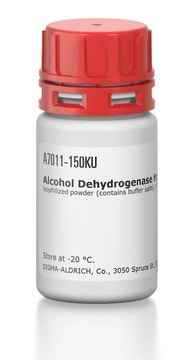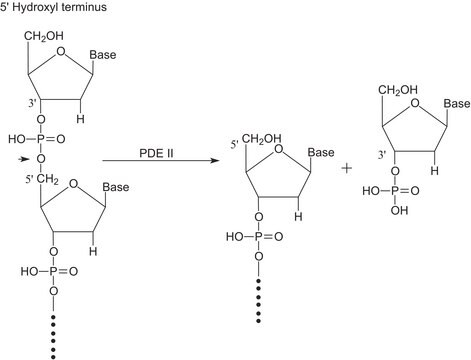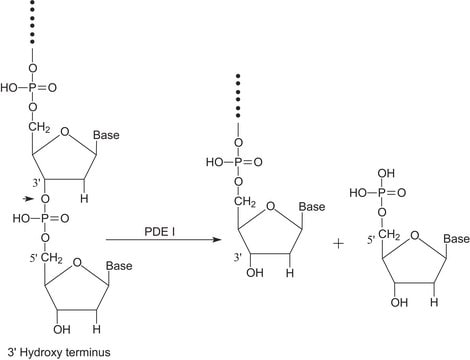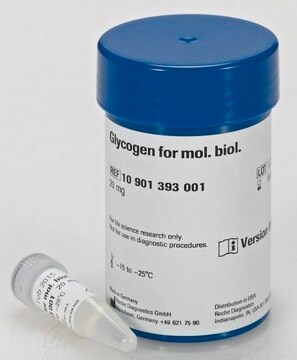G1642
sn-Glycerol-3-phosphocholine Phosphodiesterase from mold
lyophilized powder, ≥5 units/mg protein
Synonym(s):
Glycerophosphorylcholine phosphodiesterase from mold
Sign Into View Organizational & Contract Pricing
All Photos(1)
About This Item
CAS Number:
MDL number:
UNSPSC Code:
12352204
NACRES:
NA.54
Recommended Products
form
lyophilized powder
Quality Level
specific activity
≥5 units/mg protein
composition
Protein, ~40% Bradford
storage temp.
−20°C
Unit Definition
One unit will produce 1.0 μmole of choline from L-α-glycerophosphorylcholine, G4007, per min at pH 8.0 at 37 °C.
Physical form
Lyophilized powder containing Tris buffer salt
Storage Class Code
11 - Combustible Solids
WGK
WGK 3
Flash Point(F)
Not applicable
Flash Point(C)
Not applicable
Personal Protective Equipment
dust mask type N95 (US), Eyeshields, Gloves
Certificates of Analysis (COA)
Search for Certificates of Analysis (COA) by entering the products Lot/Batch Number. Lot and Batch Numbers can be found on a product’s label following the words ‘Lot’ or ‘Batch’.
Already Own This Product?
Find documentation for the products that you have recently purchased in the Document Library.
J Florin-Christensen et al.
Biochemistry and molecular biology international, 47(2), 283-292 (1999-04-17)
The purification and characterization of a novel phosphodiesterase (PDE) is presented. The activity was detected in the extracellular medium of Tetrahymena thermophila cultures, by the release of p-nitrophenol from p-nitrophenylphosphocholine (PNPPC) with an acidic pH optimum. In cell homogenates, it
J Mitra et al.
Molecular and cellular biochemistry, 139(2), 101-108 (1994-10-26)
The rat uterine secretory enzyme glycerylphosphorylcholine (GPC) diesterase (EC 3.1.4.2) had been purified and characterized previously with respect to its mol. wt., size, amino acid, carbohydrate composition and estrogen inducible properties. This enzyme is observed to have exclusive specificity for
B M Ross et al.
Lipids, 30(12), 1075-1081 (1995-12-01)
Brain levels of glycerophosphodiesters, including glycerophosphocholine (GPC) and glycerophosphoethanolamine (GPE), are altered in many human central nervous system disorders. Although much information is available on the enzymes responsible for the formation of these phospholipid metabolites, little information is known regarding
Egidio Iorio et al.
Cancer research, 70(5), 2126-2135 (2010-02-25)
Altered phosphatidylcholine (PC) metabolism in epithelial ovarian cancer (EOC) could provide choline-based imaging approaches as powerful tools to improve diagnosis and identify new therapeutic targets. The increase in the major choline-containing metabolite phosphocholine (PCho) in EOC compared with normal and
Carmelina D Anfuso et al.
Lipids, 38(1), 45-52 (2003-04-03)
In pericytes from bovine retina, the enzyme glycerophosphocholine phosphodiesterase, catalyzing the hydrolysis of sn-glycero-3-phosphocholine to glycero-3-phosphate and choline, has been characterized with respect to pH optimum, metal ion dependence, Km, inhibitors, and subcellular localization. In these cells, the natural substrate
Our team of scientists has experience in all areas of research including Life Science, Material Science, Chemical Synthesis, Chromatography, Analytical and many others.
Contact Technical Service







